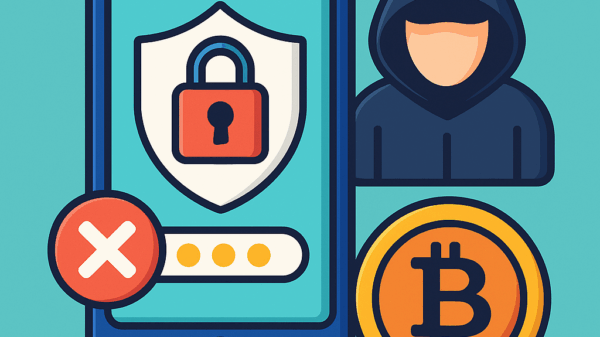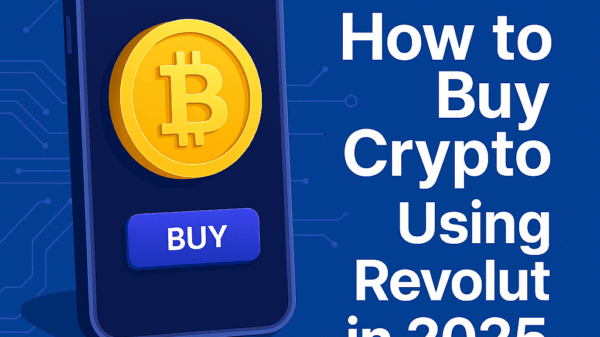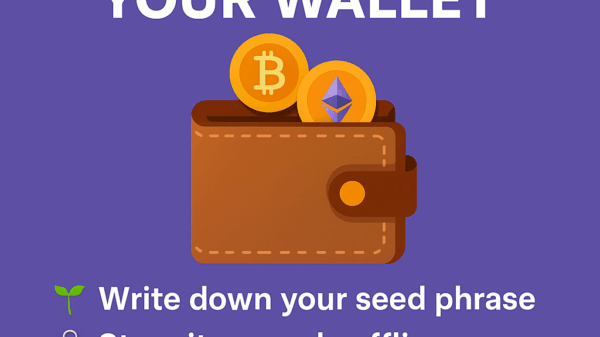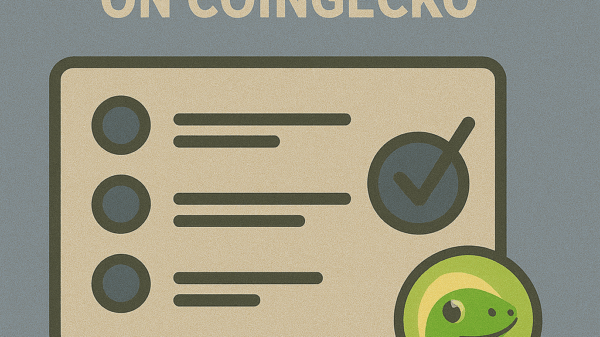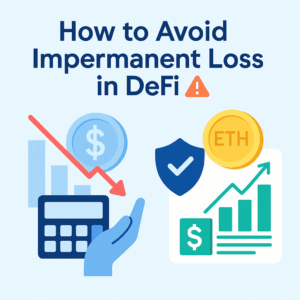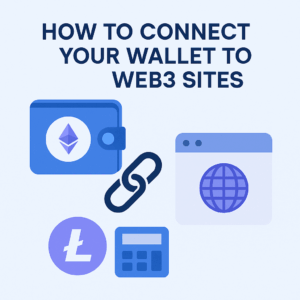How to Use Arbitrum for Cheap Transactions
By Jason Miller – Crypto Writer 10.expert 🧠 Covering Bitcoin, altcoins, blockchain & Web3.
As a crypto writer and analyst, one of the biggest challenges I’ve seen users face on the Ethereum blockchain is the notorious “gas fee.” These transaction costs, paid in ETH, can quickly add up, making small transactions uneconomical and sometimes even pricing out users from engaging with popular dApps. This is where Layer 2 (L2) scaling solutions like Arbitrum come into play.
Arbitrum is an Optimistic Rollup, a technology that processes transactions off the main Ethereum blockchain (Layer 1) and then bundles them into a single, compressed transaction that is settled on Ethereum. This “batching” significantly reduces the amount of data that needs to be processed on the expensive mainnet, leading to drastically lower gas fees and faster transaction speeds for users.
In 2025, Arbitrum has cemented its position as a leading L2, offering an experience incredibly similar to Ethereum but with a fraction of the cost. If you’re looking to engage with DeFi, NFTs, or blockchain gaming without breaking the bank on gas, Arbitrum is an essential part of your crypto toolkit.
Let’s dive into how to use Arbitrum for cheap transactions.
How to Use Arbitrum for Cheap Transactions: Unlock Affordable DeFi ⛽💸
Arbitrum offers a world of opportunities for affordable blockchain interactions. Here’s how to get started and leverage its cost-saving benefits.
Understand Arbitrum’s Value Proposition: Why It’s Cheaper 💡
- Optimistic Rollup Technology: Arbitrum processes thousands of transactions off-chain, bundling them into a single, compressed “rollup” that is then posted to the Ethereum mainnet. This significantly reduces the data footprint and, consequently, the gas cost.
- Reduced Gas Fees: Compared to Ethereum mainnet, a transaction that might cost $20-$50 on L1 could cost mere cents or a few dollars on Arbitrum, making frequent interactions economically viable.
- Faster Confirmations: By offloading computation, Arbitrum also offers much faster transaction finality compared to the congested Ethereum mainnet.
Set Up Your Wallet for Arbitrum 🦊
- MetaMask (Most Common): Arbitrum is EVM-compatible, meaning wallets like MetaMask work seamlessly.
- Add Arbitrum Network: If you haven’t already, you’ll need to add the Arbitrum One network to your MetaMask. You can do this manually by adding its RPC details (Network Name: Arbitrum One, New RPC URL:
https://arb1.arbitrum.io/rpc, Chain ID: 42161, Currency Symbol: ETH, Block Explorer URL:https://arbiscan.io) or use a service like Chainlist.org to add it automatically. - Native Gas Token (ETH): Crucially, you’ll need ETH on the Arbitrum network to pay for gas fees. Unlike some other L2s, Arbitrum uses ETH as its native gas token.
Bridge Your Funds to Arbitrum 🌉
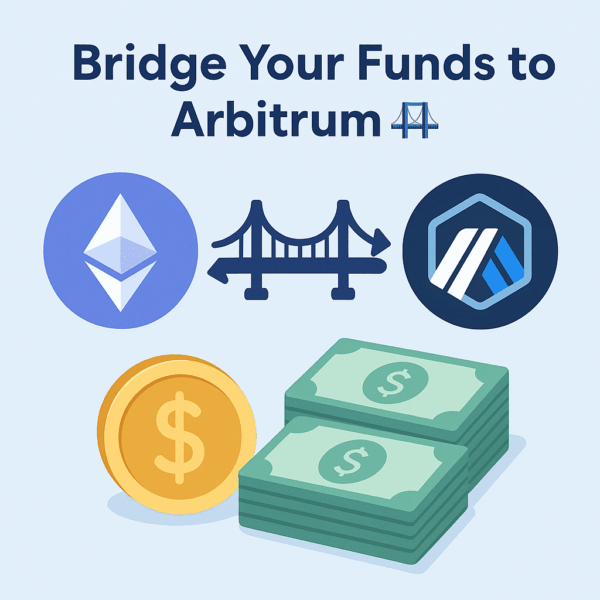
- The Arbitrum Bridge (Official): The most secure way to bridge ETH and ERC-20 tokens from Ethereum Mainnet to Arbitrum is via the official Arbitrum Bridge (
bridge.arbitarbitrum.io).- Connect your wallet to Ethereum Mainnet.
- Select the token and amount you want to bridge.
- Confirm the transaction in your wallet. This initial transaction will incur Ethereum mainnet gas fees, so plan accordingly for larger transfers.
- Third-Party Bridges/Aggregators: For faster transfers (especially for bridging from other L2s or if the official bridge withdrawal time is too long), consider using third-party bridges like Hop Protocol, Across Protocol, Synapse, or Orbiter Finance. MetaMask’s built-in bridge aggregator also provides various options.
- Be aware of varying fees, speeds, and security profiles with third-party bridges.
- Direct Deposits from CEXs: Many centralized exchanges (CEXs) like Binance, Coinbase, and Kraken now support direct withdrawals to the Arbitrum network. This is often the cheapest and easiest way to get funds onto Arbitrum, bypassing the bridge’s initial L1 gas fee.
Explore the Arbitrum Ecosystem: Where to Find DApps Discover the many decentralized applications operating on Arbitrum.
- DeFiLlama: Check DefiLlama.com for a comprehensive list of protocols by TVL (Total Value Locked) on Arbitrum.
- DappRadar: DappRadar.com offers rankings and statistics for dApps across various categories on Arbitrum.
- Popular DApps: Many major protocols have deployed on Arbitrum, including:
- DEXs: Uniswap V3, SushiSwap, Camelot, Balancer, Curve.
- Lending/Borrowing: Aave V3, Radiant Capital.
- Derivatives: GMX, Synapse.
- NFT Marketplaces: OpenSea (supports Arbitrum NFTs).
Perform Transactions (Swapping, Lending, Staking) with Low Fees 🚀
- Connect Wallet to DApp: Once your funds are on Arbitrum and your wallet is set to the Arbitrum One network, connect your wallet to any Arbitrum-native dApp (e.g., Uniswap on Arbitrum).
- Execute Transactions: Proceed with your desired actions (e.g., swapping tokens, providing liquidity, lending, borrowing, buying NFTs).
- Confirm Low Gas Fees: When you confirm transactions in your MetaMask, you’ll notice the significantly lower ETH gas fees compared to Ethereum mainnet.
Understand Transaction Speeds ⏱️
- Faster Than L1: Transactions on Arbitrum generally confirm within a few seconds to a minute, much faster than Ethereum mainnet during peak congestion.
- Withdrawal Delay (Optimistic Rollups): A key characteristic of Optimistic Rollups is the “challenge period” for withdrawals back to Ethereum mainnet. This period (typically 7 days) allows anyone to challenge the validity of a transaction. If you bridge from Arbitrum back to Ethereum via the official bridge, you’ll likely have to wait this period.
- Fast Withdrawals (Third-Party Bridges): If you need to withdraw back to Ethereum quickly, third-party bridges often offer “fast withdrawals” by essentially providing immediate liquidity (for a small fee), absorbing the 7-day waiting period on your behalf.
Monitor Arbitrum Network Activity 📈
- Arbiscan: Use Arbiscan.io (the Arbitrum block explorer) to track your transactions, check your wallet balance, and monitor network activity.
- Gas Trackers: While Arbitrum fees are generally low, you can still monitor general network conditions via L2Beat.com or specific gas trackers for Arbitrum.
Security Considerations for Arbitrum 🛡️
- Bridge Security: Bridges are complex and have been targets for exploits. Use official bridges when possible and thoroughly vet any third-party bridges.
- Smart Contract Risk: While Arbitrum’s core protocol is highly audited, individual dApps built on Arbitrum can still have smart contract vulnerabilities. Always do your due diligence on any protocol you interact with.
- Optimistic vs. ZK Rollups: Arbitrum is an Optimistic Rollup, meaning transactions are “optimistically” assumed to be correct, with a fraud-proof mechanism allowing challenges. This differs from ZK-Rollups which use cryptographic proofs for immediate validity, though ZK technology is still maturing.
ARBITRUM (ARB) Token & Governance 🗳️
- Governance Token: The ARB token is primarily Arbitrum’s governance token. Holding ARB allows you to participate in decisions regarding the network’s future.
- Not for Gas: Importantly, ARB is not used to pay for transaction fees on Arbitrum One; ETH is.
Explore Arbitrum Nova for Specific Use Cases ✨
- Arbitrum Nova: A separate Arbitrum chain optimized for ultra-low fees and high throughput, making it ideal for gaming and social applications. It uses a slightly different trust assumption (AnyTrust protocol) for even greater efficiency.
- Bridging to Nova: You would also bridge tokens to Nova, similar to Arbitrum One, though some dApps are specific to Nova.
Benefits for DeFi Users 💹
- Affordable Swaps: Frequent token swaps on DEXs become much more feasible.
- Cheaper Lending/Borrowing: Interact with money markets like Aave without prohibitive gas costs.
- Accessible Liquidity Providing: Lower fees make it more economical to provide liquidity to DEXs and manage those positions.
Consider a Dedicated “Arbitrum Wallet” (Optional) 🔒
- Some users prefer to have a separate MetaMask account or even a dedicated hardware wallet address specifically for L2 interactions, keeping their main L1 funds more isolated.
Participate in Arbitrum Quests/Incentives (If available) 🎁
- Arbitrum and its dApps often run incentive programs or quests to encourage user adoption. Keep an eye out for these opportunities to earn extra rewards.
Understand the Trade-offs: L1 vs L2 ⚖️
- While Arbitrum offers undeniable cost benefits, remember that transacting directly on Ethereum mainnet offers the highest degree of decentralization and security guarantees (as it’s the base layer). For very large, infrequent, or extremely high-value transactions where security is the absolute top priority, L1 might still be preferred by some.
Stay Updated with Arbitrum’s Development 📰
- The L2 landscape is rapidly evolving. Follow Arbitrum’s official channels (Twitter/X, Discord, docs.arbitrum.foundation) to stay informed about upgrades (like Nitro), new features, and changes that could impact your experience.
By embracing Arbitrum, you’re not just reducing transaction costs; you’re stepping into a more scalable, user-friendly, and economically viable version of the Ethereum ecosystem, opening up a wider range of possibilities for your crypto journey.

